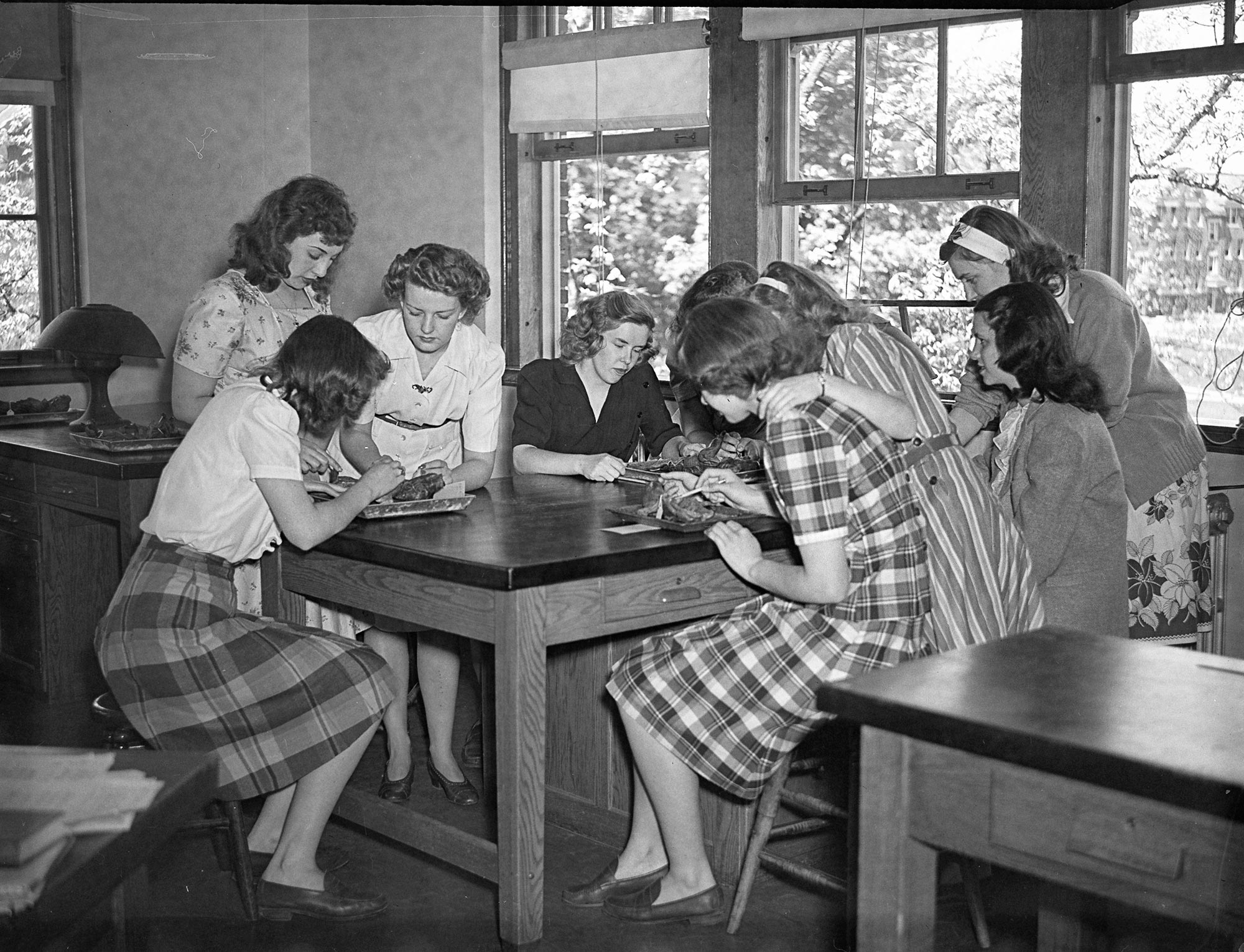Challenge yourself to Tom’s Trivia!
See if you know as much as King of UConn Trivia and University Deputy Spokesperson Tom Breen ’00 (CLAS).
Scroll to the bottom to reveal the answers.
In May 1970, hundreds of students occupied the ROTC hangar on campus and staged a “paint-in” because they wanted the building converted to what?
A: A center for peace studies
B: A day care facility
C: A student recreation center
D: Communal housing for male and female students
The UConn men’s basketball team made its first NCAA tournament appearance on March 20, 1951, in a game that had so many UConn students in attendance a special train from Willimantic to New York was chartered. Who defeated the Huskies on that occasion?
A: St. John’s
B: Georgetown
C: Boston College
D: Syracuse
The Josephine Dolan Collection at the School of Nursing includes everything from period medical uniforms to a 500-pound iron lung. Who was Josephine Dolan?
A: UConn’s first dean of nursing
B: An alumna of the nursing school
C: The first nursing instructor at UConn
D: A Connecticut nurse who traveled the world collecting medical artifacts
Between the end of World War II and the mid-1950s, an area on the north side of campus became known as “Oil Can Alley.” What was this area used for?
A: The university motor pool
B: Experiments by the School of Engineering
C: Construction equipment storage
D: Faculty housing

Nursing students in a dissection course circa 1946. The program is celebrating its seventy-fifth anniversary.
Answers
- B. About 200 students painted the interior and exterior of the building in a “daycare” motif, demanding the ROTC be evicted from the premises. Days later, around 300 students volunteered to repaint the building in its original color scheme.
- A. UConn fell to St. John’s by a score of 63-52. The game began a long association between UConn and Madison Square Garden, though, and when Jonathan IV was led into the famous arena for the game against St. John’s, one sportswriter wrote the dog received the loudest ovation of any mascot in Garden history.
- C. The School of Nursing opened at UConn in 1942 with 13 students. Dolan was the first full-time instructor, teaching for over 35 years, and donating her extensive collection of documents and artifacts to the School of Nursing in 1996. Permanent and rotating exhibits are on display in the school’s Widmer Wing
- D. Located behind a heating plant, a series of four-room apartments with insufficient heating and children’s playground dangerously close to North Eagleville Road, the temporary faculty houses here were a product of the rapid expansion of the university after the war, and were gone by 1956.

Leave a Reply